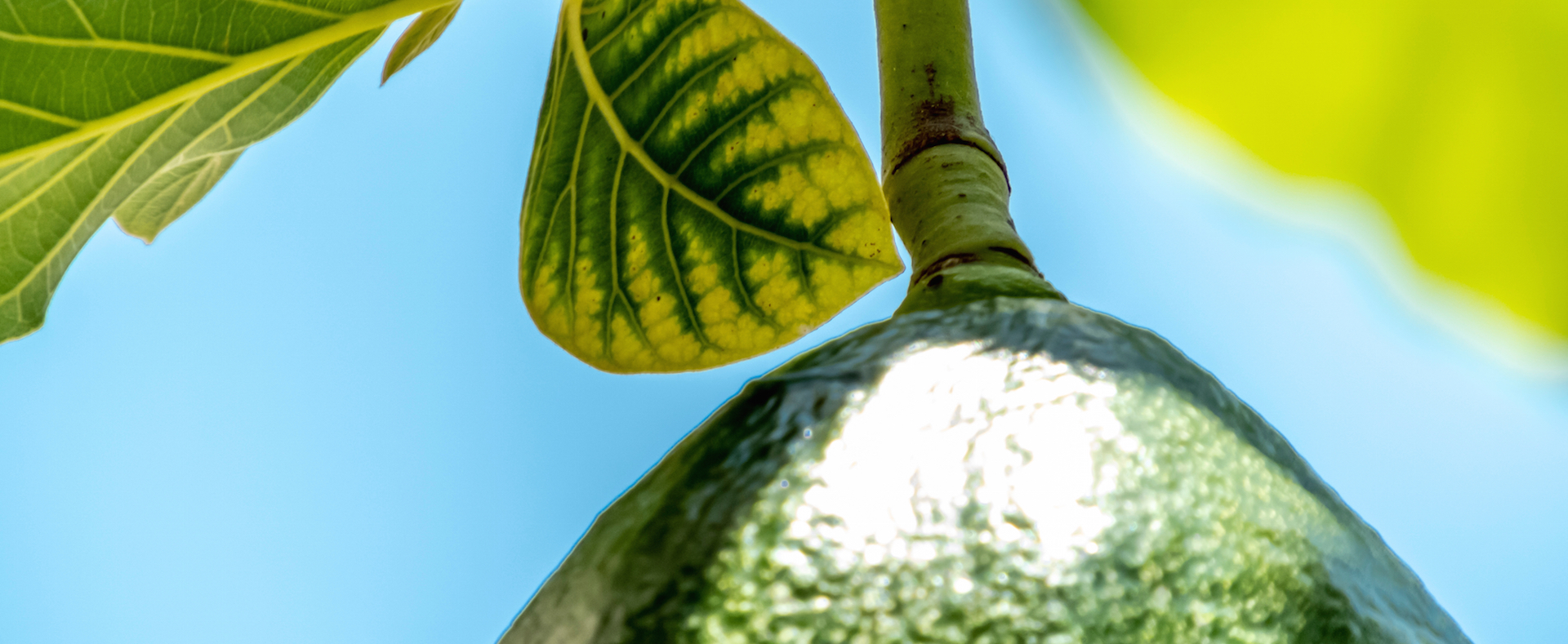
We recently caught up with Andy Gabryszak, West Pak’s southern field manager, for a June/July 2019 cultural report and to ask what growers should know for this time of the year.
Pest Control & Monitoring
For the remainder of June and heading into July, Andy recommends that growers keep in contact with their pest control advisor (PCA) or field team member while looking over the young flush.
Early summer is the time to monitor for scirtothrips perseae or avocado thrips. Andy notes that the first flowering is safe from damage because of its size but suggests keeping an eye on the second and third flowerings and the pea-sized to BB-sized fruit that is on the trees. These fruitlets are still susceptible to damage from the scirtothrips. Detection of the pest requires a trained eye; using an entomologist’s 20x magnification lens, a pest control advisor can count the eggs, the adults and juveniles that can cause damage to the young fruit and recommend an appropriate treatment plan.
Another pest that has made a recent re-appearance after being absent for a few years is the omnivorous looper. Their damage is often associated with dense foliage, new leaves, and overcast/cool conditions but Andy points out that hardened off leaves or older vegetation is also susceptible. Growers should be aware that a full-grown larva can consume an entire leaf in a day. Although healthy avocado trees can tolerate a considerable amount of leaf damage without severe effects on growth or fruit yield, extensive feeding can result in sunburn and may reduce the crop for the following year. The omnivorous looper is also known to chew fruit too. If young fruit is fed upon, it can become misshapen or leave scars on the fruit surface, which may cause the avocados to be culled or downgraded.
“The looper is an easily monitored pest due to the damage it causes. There is a simple biological control available for it – a parasitic wasp that can be released that can easily keep these larvae under control. If the counts on the looper and their damage is beyond economic threshold where the trees are starting to defoliate, there are both organic and synthetic chemical sprays that can take care of it,” explains Andy.
He continues, “Although we are almost out of the woods on pests, there is one more concern out of the south, and that is the avocado lace bug. It’s a new pest on the horizon that is making an appearance mainly in the North San Diego County. They suck leaf sap, feeding in groups on the underside of leaves. Growers should contact their PCA if they notice any brown blotching in the middle of leaves and take any suggested action.”
Fertilization
With the recent fruit set and flushing of the new leaves, most growers are using calcium nitrate or a fertilizer with calcium to help the fruit set stick and stay. Towards the middle to end of July, Andy advises a light feeding with a nitrogen-heavy fertilizer as well. He also says that growers should make sure that their leaf and/or soil analyses are being taken to plan ahead for fall fertilization.
Irrigation
With the abundant rains the region received over the winter, the soil was leached of any salts, meaning that local trees have a great basis to hold the fruit set.
Currently, the June gloom is coming through, and growers are having some overcast and cool mornings, which help the status of their trees. Unfortunately, June gloom can’t hang around forever, and these cooler days are going to give way to a heated summer. Heading into the hotter months growers are advised to pay attention to the long-range weather forecast and to be on the lookout for any spikes in temperatures so they can stay ahead of irrigation.
Andy points out the importance of making sure that the groves are wet when temperatures elevate. “The worst thing that growers can do is have their trees under irrigated during a heatwave or east wind event. Growers should make sure that their irrigation systems are up and running, the lines are checked, and the sprinklers are running clear. We have been irrigating steadily for the last month, so everything should be in top working condition getting ready for the long irrigation runs that go hand-in-hand with the long hot summer.”
Other suggestions from this field pro include using a California Irrigation Management Information System or CIMIS calculator to monitor water usage by the tree or a tensiometer, an instrument that measures soil moisture and the availability of water to a plant. In irrigation scheduling, these devices can help farmers determine when to water and, when used in conjunction with a water retention curve, can be used to determine how much to water.
Fruit Shed
With the amount that the local avocado trees have set, Andy is quick to point out that some fruit shed is inevitable. “You can do everything a hundred percent correct culturally and with fertilization and irrigation, but there will always be some fruit shed. A lot of fruit was set this spring, so growers shouldn’t be too alarmed if they see more BBs or young fruit on the ground than average. If concerned on the amount of shed or if farmers have any questions or concerns on any issue, they should reach out to their field representative for consultation. Our team is happy to help!”
Growers – If you are not signed up for our weather email, please contact Maria or Margie so they can add you to the list.






